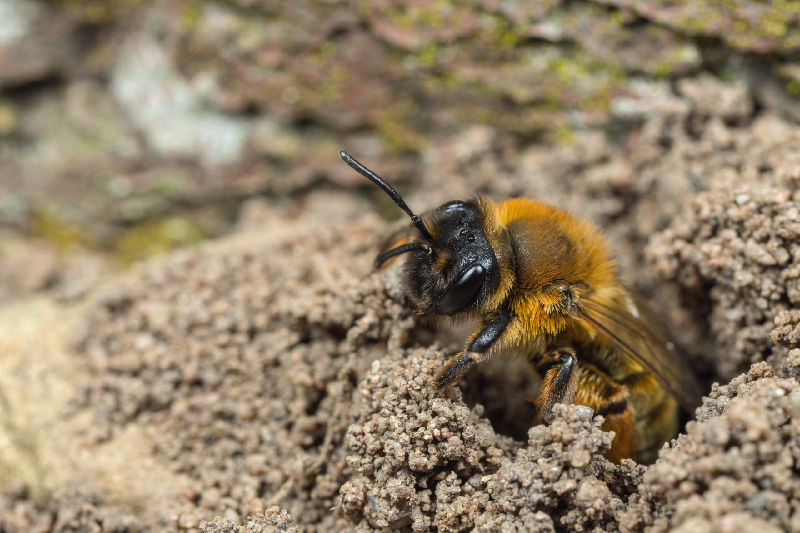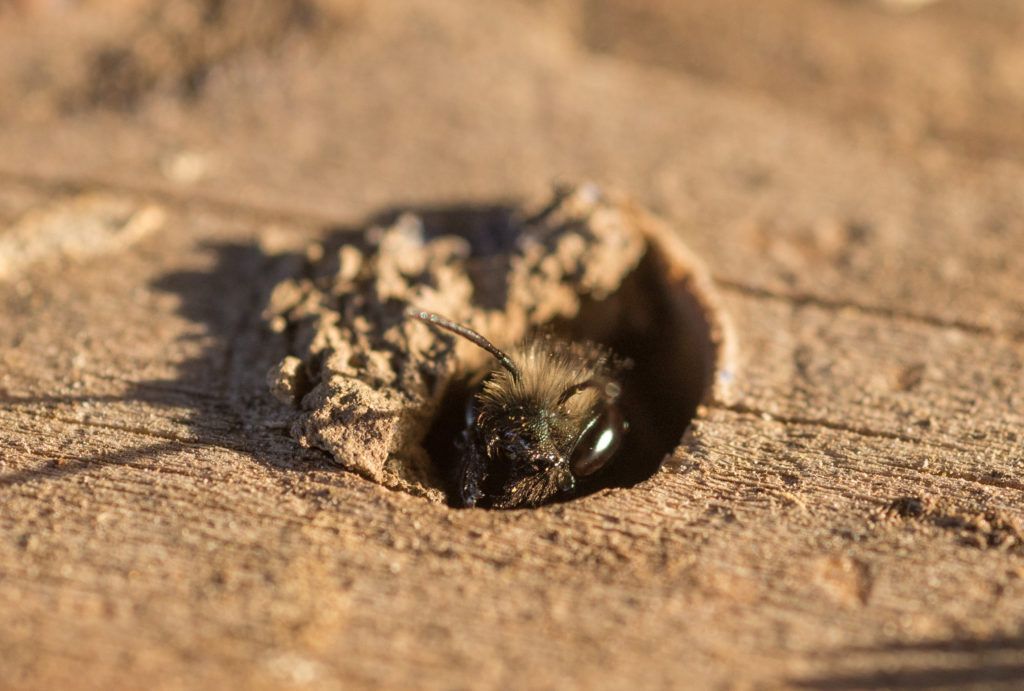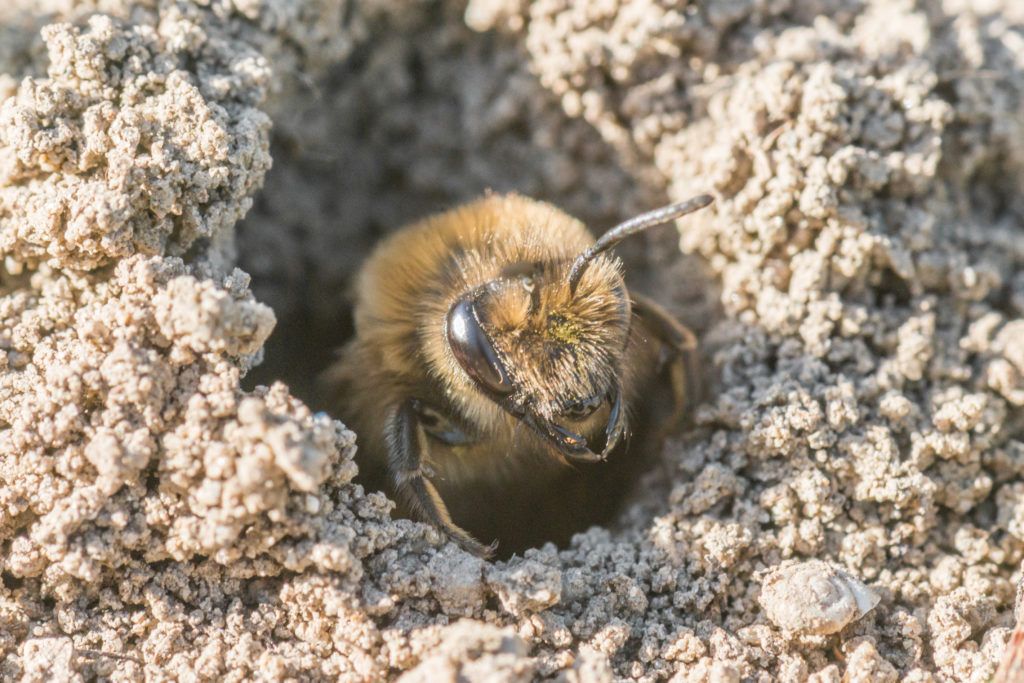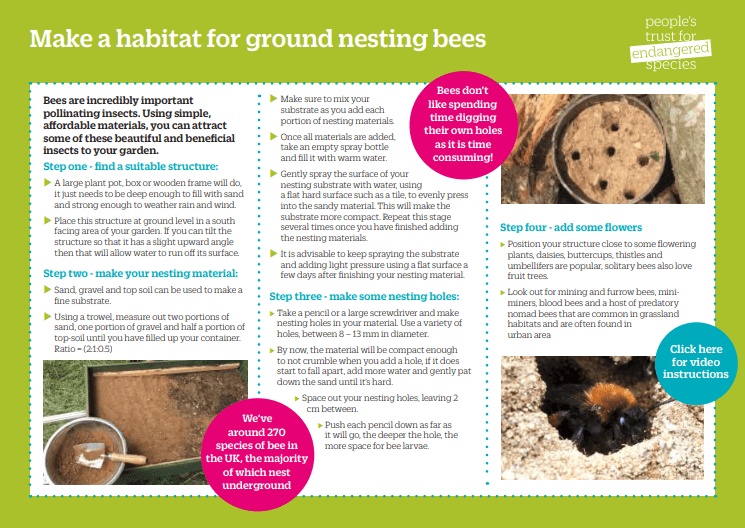How to make a habitat for ground nesting bees

Bees are incredibly important pollinating insects. Using simple, affordable materials, you can attract some of these beautiful and beneficial insects to your garden.
Step one – find a suitable structure
- A large plant pot, box or wooden frame will do, it just needs to be deep enough to fill with sand and strong enough to weather rain and wind.
- Place this structure at ground level in a south facing area of your garden. If you can tilt the structure so that it has a slight upward angle then that will allow water to run off its surface.
Step two – make your nesting material
- Sand, gravel and top soil can be used to make a fine substrate.
- Using a trowel, measure out two portions of sand, one portion of gravel and half a portion of top-soil until you have filled up your container. Ratio = (4:2:1)
- Make sure to mix your substrate as you add each portion of nesting materials.
- Once all materials are added, take an empty spray bottle and fill it with warm water.
- Gently spray the surface of your nesting substrate with water, using a flat hard surface such as a tile, to evenly press into the sandy material. This will make the substrate more compact.
- Repeat this stage several times once you have finished adding the nesting materials.
- It is advisable to keep spraying the substrate and adding light pressure using a flat surface a few days after finishing your nesting material.


Step three – make some nesting holes
- Take a pencil or a large screwdriver and make nesting holes in your material. Use a variety of holes, between 8 – 13 mm in diameter.
- By now, the material will be compact enough to not crumble when you add a hole, if it does start to fall apart, add more water and gently pat down the sand until it’s hard.
- Space out your nesting holes, leaving 2 cm between.
- Push each pencil down as far as it will go, the deeper the hole, the more space for bee larvae.
Step four – add some flowers
- Position your structure close to some flowering plants, daisies, buttercups, thistles and umbellifers are popular, solitary bees also love fruit trees
- Look out for mining and furrow bees, miniminers, blood bees and a host of predatory nomad bees that are common in grassland habitats and are often found in urban area.
Click image to download instructions:

Show us your creation!
Take a photo of your ground nesting bees habitat and submit it below, or post on social media and inspire others to do the same!
